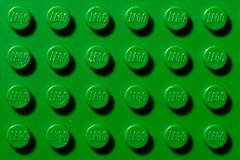As I mentioned last week, I've been following @dailyshoot for a series of daily photo assignments. Here's what I shot this week:
Sunday, November 29, 2009
Saturday, November 28, 2009
Sling over HTTP
A few days ago I posted about Jackrabbit, and now it's time to follow up with Sling as a means of accessing a content repository over HTTP. Apache Sling is a web framework based on JCR content repositories like Jackrabbit and among other things it adds some pretty nice ways of accessing manipulating content over HTTP.
The easiest way to get started with Sling is to download the "Sling Standalone Application" from the Sling downloads page. Unpack the distribution package and start the Sling application with "java -jar org.apache.sling.launchpad.app-5-incubator.jar". Like Jackrabbit, Sling can by default be accessed at http://localhost:8080/. There's a 15 minute tutorial that you can check out to learn more about Sling.
Since Sling comes with an embedded Jackrabbit repository, it also supports much of the WebDAV functionality covered in my previous post. Instead of rehashing those points, this post takes a look at the additional HTTP content access features in Sling.
CR1: Create a document
Like with Jackrabbit, all documents in Sling have a path that is used to identify and locate the document. Sling solves the problem of having to come up with the document name by supporting a virtual "star resource" that'll automatically generate a unique name for a new document. Thus instead of having to think of a URL like "http://localhost:8080/hello" in advance, the new document can be created by simply posting to the star resource at "http://localhost:8080/*".
The Sling POST servlet is a pretty versatile tool, and can be used to perform many content manipulation operations using normal HTTP POST requests and the application/x-www-form-urlencoded format used by normal HTML forms. With the POST servlet, the example document can be created like this:
The 201 Created response will contain a Location header that points to the newly created document. In this case the returned URL is "http://localhost:8080/hello_world_" based on some document title heuristics included in Sling. If you run the command again you'll get a different URL since the Sling star resource will automatically avoid overwriting existing content.
Pros:
CR2: Read a document
Sling contains multiple ways of accessing the document content in different renderings. In fact much of the power of Sling comes from the extensive support for rendering underlying content in various different and easily customizable ways.
Unfortunately at least the latest 5-incubator version of the Sling Application doesn't support any reasonable default rendering at the previously returned document URL. The client needs to explicitly know to add a ".json" or ".xml" suffix to the document URL to get a JSON or XML rendering of the document.
The JCR document view format is used for the XML rendering.
Pros:
Cons:
CR3: Update a document
The Sling POST servlet supports also document updates, so we can just POST the updated properties to the document URL:
Pros:
Cons:
CR4: Delete a document
You can either use the special ":operation=delete" feature of the Sling POST servlet or a standard DELETE request to delete a document:
Pros:
Cons:
The easiest way to get started with Sling is to download the "Sling Standalone Application" from the Sling downloads page. Unpack the distribution package and start the Sling application with "java -jar org.apache.sling.launchpad.app-5-incubator.jar". Like Jackrabbit, Sling can by default be accessed at http://localhost:8080/. There's a 15 minute tutorial that you can check out to learn more about Sling.
Since Sling comes with an embedded Jackrabbit repository, it also supports much of the WebDAV functionality covered in my previous post. Instead of rehashing those points, this post takes a look at the additional HTTP content access features in Sling.
CR1: Create a document
Like with Jackrabbit, all documents in Sling have a path that is used to identify and locate the document. Sling solves the problem of having to come up with the document name by supporting a virtual "star resource" that'll automatically generate a unique name for a new document. Thus instead of having to think of a URL like "http://localhost:8080/hello" in advance, the new document can be created by simply posting to the star resource at "http://localhost:8080/*".
The Sling POST servlet is a pretty versatile tool, and can be used to perform many content manipulation operations using normal HTTP POST requests and the application/x-www-form-urlencoded format used by normal HTML forms. With the POST servlet, the example document can be created like this:
$ curl --data 'title=Hello, World!' --data 'date=2009-11-17T12:00:00.000Z' \
--data 'date@TypeHint=Date' --user admin:admin \
http://localhost:8080/*
The 201 Created response will contain a Location header that points to the newly created document. In this case the returned URL is "http://localhost:8080/hello_world_" based on some document title heuristics included in Sling. If you run the command again you'll get a different URL since the Sling star resource will automatically avoid overwriting existing content.
Pros:
- A single standard POST request is enough
- The HTML form format is used for the POST body
- Automatically generated clean and readable document URL
Cons:
- The star resource URL pattern is fixed and creates an unnecessarily tight binding between the client and the server
CR2: Read a document
Sling contains multiple ways of accessing the document content in different renderings. In fact much of the power of Sling comes from the extensive support for rendering underlying content in various different and easily customizable ways.
Unfortunately at least the latest 5-incubator version of the Sling Application doesn't support any reasonable default rendering at the previously returned document URL. The client needs to explicitly know to add a ".json" or ".xml" suffix to the document URL to get a JSON or XML rendering of the document.
$ curl http://localhost:8080/hello_world_.json
{
"title": "Hello, World!",
"date": "Tue Nov 17 2009 12:00:00 GMT+0100",
"jcr:primaryType": "nt:unstructured"
}
$ curl http://localhost:8080/hello_world_.xml
<?xml version="1.0" encoding="UTF-8"?>
<hello_world_ xmlns:fn="http://www.w3.org/2005/xpath-functions"
xmlns:fn_old="http://www.w3.org/2004/10/xpath-functions"
xmlns:xs="http://www.w3.org/2001/XMLSchema"
xmlns:jcr="http://www.jcp.org/jcr/1.0"
xmlns:mix="http://www.jcp.org/jcr/mix/1.0"
xmlns:sv="http://www.jcp.org/jcr/sv/1.0"
xmlns:sling="http://sling.apache.org/jcr/sling/1.0"
xmlns:rep="internal"
xmlns:nt="http://www.jcp.org/jcr/nt/1.0"
jcr:primaryType="nt:unstructured"
date="2009-11-17T12:00:00.000+01:00"
title="Hello, World!"/>
The JCR document view format is used for the XML rendering.
Pros:
- A single GET request is enough
- Both the JSON and XML formats are easy to consume
Cons:
- Simply GETting the document URL doesn't return anything useful
- The ".json" and ".xml" URL patterns create an unnecessary binding between the client and the server
- Neither rendering contains property type information
- The XML rendering contains unnecessary namespace declarations
CR3: Update a document
The Sling POST servlet supports also document updates, so we can just POST the updated properties to the document URL:
$ curl --data 'history=Document date updated' \
--data 'date=2009-11-18T12:00:00.000Z' \
--data 'date@TypeHint=Date' --user admin:admin \
http://localhost:8080/hello_world_
Pros:
- A single standard POST request is enough
- The HTML form format is used for the POST body
Cons:
- None.
CR4: Delete a document
You can either use the special ":operation=delete" feature of the Sling POST servlet or a standard DELETE request to delete a document:
$ curl --data ':operation=delete' --user admin:admin \
http://localhost:8080/hello_world_
$ curl --request DELETE --user admin:admin \
http://localhost:8080/hello_world_
Pros:
- A standard DELETE or POST request is all that's needed
Cons:
- None.
Monday, November 23, 2009
Jackrabbit over HTTP
Last week I posted a simple set of operations that a "RESTful content repository" should support over HTTP. Here's a quick look at how Apache Jackrabbit meets this challenge.
To get started I first downloaded the standalone jar file from the Jackrabbit downloads page, and started it with "java -jar jackrabbit-standalone-1.6.0.jar". This is a quick and easy way to get a Jackrabbit repository up and running. Just point your browser to http://localhost:8080/ to check that the repository is there.
Jackrabbit comes with a built-in advanced WebDAV feature that gives you pretty good control over your content. The root URL for the default workspace is http://localhost:8080/server/default/jcr:root/ and by default Jackrabbit grants full write access if you specify any username and password.
Note that Jackrabbit also has another, filesystem-oriented WebDAV feature that you can access at http://localhost:8080/repository/default/. This entry point is great for dealing with simple things like normal files and folders, but for more fine-grained content you'll want to use the advanced WebDAV feature as outlined below.
CR1: Create a document
All documents (nodes) in Jackrabbit have a pathname just like files in a normal file system. Thus to create a new document, we first need to come up with a name and a location for it. Let's call the example document "hello" and place it at the root of the default workspace, so we can later address it at the path "/hello". The related WebDAV URL is http://localhost:8080/server/default/jcr:root/hello/.
You can use the MKCOL method to create a new node in Jackrabbit. An MKCOL request without a body will create a new empty node, but you can specify the initial contents of the node by including a snippet of JCR system view XML that describes your content. In our case we want to specify the "title" and "date" properties. Note that JCR does not support date-only properties, so we need to store the date value as a more accurate timestamp.
The full request looks like this:
The resulting document is available at the URL we already constructed above, i.e. http://localhost:8080/server/default/jcr:root/hello/.
Pros:
CR2: Read a document
Now that the document is created, we can read it with a standard GET request:
Note that the result includes the standard jcr:primaryType property that is always included in all JCR nodes. Also all namespaces registered in the repository are included even though strictly speaking they add little value to the response.
Pros:
Cons:
CR3: Update a document
The WebDAV feature in Jackrabbit does not support setting multiple properties in a single request, so we need to use separate requests for each property change. The easiest way to update a property is to PUT the new value to the property URL. The only tricky part is that unless the node type explicitly says otherwise the new value is by default stored as a binary stream. You need to specify a custom jcr-value/... content type to override that default.
GETting the document after these changes will give you the updated property values.
Pros:
Cons:
CR4: Delete a document
Deleting a document is easy with the DELETE method:
That's it. Trying to GET the document after it's been deleted gives a 404 response, just as expected.
Pros:
Cons:
To get started I first downloaded the standalone jar file from the Jackrabbit downloads page, and started it with "java -jar jackrabbit-standalone-1.6.0.jar". This is a quick and easy way to get a Jackrabbit repository up and running. Just point your browser to http://localhost:8080/ to check that the repository is there.
Jackrabbit comes with a built-in advanced WebDAV feature that gives you pretty good control over your content. The root URL for the default workspace is http://localhost:8080/server/default/jcr:root/ and by default Jackrabbit grants full write access if you specify any username and password.
Note that Jackrabbit also has another, filesystem-oriented WebDAV feature that you can access at http://localhost:8080/repository/default/. This entry point is great for dealing with simple things like normal files and folders, but for more fine-grained content you'll want to use the advanced WebDAV feature as outlined below.
CR1: Create a document
All documents (nodes) in Jackrabbit have a pathname just like files in a normal file system. Thus to create a new document, we first need to come up with a name and a location for it. Let's call the example document "hello" and place it at the root of the default workspace, so we can later address it at the path "/hello". The related WebDAV URL is http://localhost:8080/server/default/jcr:root/hello/.
You can use the MKCOL method to create a new node in Jackrabbit. An MKCOL request without a body will create a new empty node, but you can specify the initial contents of the node by including a snippet of JCR system view XML that describes your content. In our case we want to specify the "title" and "date" properties. Note that JCR does not support date-only properties, so we need to store the date value as a more accurate timestamp.
The full request looks like this:
$ curl --request MKCOL --data @- --user name:pass \
http://localhost:8080/server/default/jcr:root/hello/ <<END
<sv:node sv:name="hello" xmlns:sv="http://www.jcp.org/jcr/sv/1.0">
<sv:property sv:name="message" sv:type="String">
<sv:value>Hello, World!</sv:value>
</sv:property>
<sv:property sv:name="date" sv:type="Date">
<sv:value>2009-11-17T12:00:00.000Z</sv:value>
</sv:property>
</sv:node>
END
The resulting document is available at the URL we already constructed above, i.e. http://localhost:8080/server/default/jcr:root/hello/.
Pros:
- A single standard WebDAV MKCOL request is enough
- The standard JCR system view XML format is used for the MKCOL body
- The XML format is easy to produce
Cons:
- We need to decide the name and location of the document before it can be created
- The name of the document is duplicated, once in the URL and once in the sv:name attribute
- The date property must be specified down to the millisecond
- While standardized, the MKCOL method is not as well known as PUT or POST
- While standardized, the JCR system view format is not as well known as JSON, Atom or generic XML
- The system view XML format is quite verbose
CR2: Read a document
Now that the document is created, we can read it with a standard GET request:
$ curl --user name:pass http://localhost:8080/server/default/jcr:root/hello/
<?xml version="1.0" encoding="UTF-8"?>
<sv:node sv:name="hello"
xmlns:fn="http://www.w3.org/2005/xpath-functions"
xmlns:fn_old="http://www.w3.org/2004/10/xpath-functions"
xmlns:xs="http://www.w3.org/2001/XMLSchema"
xmlns:jcr="http://www.jcp.org/jcr/1.0"
xmlns:mix="http://www.jcp.org/jcr/mix/1.0"
xmlns:sv="http://www.jcp.org/jcr/sv/1.0"
xmlns:rep="internal"
xmlns:nt="http://www.jcp.org/jcr/nt/1.0">
<sv:property sv:name="jcr:primaryType" sv:type="Name">
<sv:value>nt:unstructured</sv:value>
</sv:property>
<sv:property sv:name="date" sv:type="Date">
<sv:value>2009-11-17T12:00:00.000Z</sv:value>
</sv:property>
<sv:property sv:name="message" sv:type="String">
<sv:value>Hello, World!</sv:value>
</sv:property>
</sv:node>
Note that the result includes the standard jcr:primaryType property that is always included in all JCR nodes. Also all namespaces registered in the repository are included even though strictly speaking they add little value to the response.
Pros:
- A single GET request is enough
- The XML format is easy to consume
Cons:
- The system view format is a bit verbose and generally not that well known
CR3: Update a document
The WebDAV feature in Jackrabbit does not support setting multiple properties in a single request, so we need to use separate requests for each property change. The easiest way to update a property is to PUT the new value to the property URL. The only tricky part is that unless the node type explicitly says otherwise the new value is by default stored as a binary stream. You need to specify a custom jcr-value/... content type to override that default.
$ curl --request PUT --header "Content-Type: jcr-value/date" \
--data "2009-11-18T12:00:00.000Z" --user name:pass \
http://localhost:8080/server/default/jcr:root/hello/date
$ curl --request PUT --header "Content-Type: jcr-value/string" \
--data "Document date updated" --user name:pass \
http://localhost:8080/server/default/jcr:root/hello/history
GETting the document after these changes will give you the updated property values.
Pros:
- Standard PUT requests are used
- No XML or other wrapper format needed, just send the raw value as the request body
Cons:
- More than one request needed
- Need to use non-standard jcr-value/... media types for non-binary values
CR4: Delete a document
Deleting a document is easy with the DELETE method:
$ curl --request DELETE --user name:pass \
http://localhost:8080/server/default/jcr:root/hello/
That's it. Trying to GET the document after it's been deleted gives a 404 response, just as expected.
Pros:
- A standard DELETE request is all that's needed
Cons:
- None.
Sunday, November 22, 2009
Daily Shoot, week 1
A week ago James Duncan Davidson and Mike Clark launched @dailyshoot, a Twitter feed that posts daily photo assignments. The idea is to encourage people who want to learn photography to practice it every day with the help of a simple assignment that fits a single tweet. I'm following Duncan's blog, so I found out about Daily Shoot the day it was launched.
So far I've completed all the assignments and I've already learned quite a bit doing so. It's very interesting to see how other people interpret the same assignments. I avoid looking at other responses before completing an assignment so that I don't end up just copying someone else's approach. Once I'm done I look at what other's have done for some nice insight on what I could have done differently. The process is quite educational.
Here's what I've shot this week:
You can click on the pictures for more background on each assignment and how I approached it. For more information on Daily Shoot, see the recently launched website.
So far I've completed all the assignments and I've already learned quite a bit doing so. It's very interesting to see how other people interpret the same assignments. I avoid looking at other responses before completing an assignment so that I don't end up just copying someone else's approach. Once I'm done I look at what other's have done for some nice insight on what I could have done differently. The process is quite educational.
Here's what I've shot this week:
You can click on the pictures for more background on each assignment and how I approached it. For more information on Daily Shoot, see the recently launched website.
Tuesday, November 17, 2009
Content Repository over HTTP
Two weeks ago during the BarCamp at the ApacheCon US I chaired a short session titled "The RESTful Content Repository". The idea of the session was to discuss the various ways that existing content repositories support RESTful access over HTTP and to perhaps find some common ground from which a generic content repository protocol could be formulated.
The REST architectural style was generally accepted as a useful set of constraints for the architecture of distributed content-based applications, but as an architectural style it doesn't define what the bits on the wire should look like. This is what we set out to define with the HTTP protocol as a baseline. We didn't get too far, but see below for some collected thoughts and a useful set of "test cases" that I hope to use to further investigate this idea.
Existing solutions
Many existing content repositories and related products already support one or more HTTP-based access patterns: Apache Jackrabbit exposes two slightly different WebDAV-based access points. Apache Sling adds the SlingPostServlet and default JSON and XML renderings of content. Apache CouchDB uses JSON over HTTP as the primary access protocol. Apache Solr uses XML over HTTP. Midgard doesn't have a built-in HTTP binding for content, but makes it very easy to implement such bindings. This list just scratches the surface...
There are even existing generic protocols that match at least parts of what we wanted to achieve. WebDAV has been around for ten years already, but the way it extends HTTP with extra methods makes it harder to use with existing HTTP clients and libraries. The AtomPub protocol solves that issue, but being based on the Atom format and leaving much of the server behaviour undefined, AtomPub may not be the best solution for generic content repositories.
Content repository operations over HTTP
To better understand the needs and capabilities of existing solutions, we should come up with a simple set of content operations and find out if and how different systems support those operations over HTTP. The most basic such set of operations is CRUD, i.e. how to create, read, update, and delete a document, so let's start with that. I'm giving each operation a key (CRn, as in "Content Repository operation N") and a brief description of what's expected. In later posts I hope to explore how these operations can be implemented with curl or some other simple HTTP client accessing various kinds of content repositories. I'm also planning to extend the set of required operations to cover features like search, linking, versioning, transactions, etc.
CR1: Create a document
Documents with simple properties like strings and dates are basic building blocks of all content applications. How can I create a new document with the following properties?
At the end of this operation I should have a URL that I can use to access the created document.
CR2: Read a document
Given the URL of a document (see CR1), how do I read the properties of that document?
The retrieved property values should match the values given when the document was created.
CR3: Update a document
Given the URL of a document (see CR1), how do update the properties of that document? For example, I want to update the existing date property and add a new string property:
When the document is read (see CR2) after this update, the retrieved information should contain the original title and the above updated date and history values.
CR4: Delete a document
Given the URL of a document (see CR1), how do I delete that document?
Once deleted, it should no longer be possible to read (see CR2) or update (see CR3) the document.
The REST architectural style was generally accepted as a useful set of constraints for the architecture of distributed content-based applications, but as an architectural style it doesn't define what the bits on the wire should look like. This is what we set out to define with the HTTP protocol as a baseline. We didn't get too far, but see below for some collected thoughts and a useful set of "test cases" that I hope to use to further investigate this idea.
Existing solutions
Many existing content repositories and related products already support one or more HTTP-based access patterns: Apache Jackrabbit exposes two slightly different WebDAV-based access points. Apache Sling adds the SlingPostServlet and default JSON and XML renderings of content. Apache CouchDB uses JSON over HTTP as the primary access protocol. Apache Solr uses XML over HTTP. Midgard doesn't have a built-in HTTP binding for content, but makes it very easy to implement such bindings. This list just scratches the surface...
There are even existing generic protocols that match at least parts of what we wanted to achieve. WebDAV has been around for ten years already, but the way it extends HTTP with extra methods makes it harder to use with existing HTTP clients and libraries. The AtomPub protocol solves that issue, but being based on the Atom format and leaving much of the server behaviour undefined, AtomPub may not be the best solution for generic content repositories.
Content repository operations over HTTP
To better understand the needs and capabilities of existing solutions, we should come up with a simple set of content operations and find out if and how different systems support those operations over HTTP. The most basic such set of operations is CRUD, i.e. how to create, read, update, and delete a document, so let's start with that. I'm giving each operation a key (CRn, as in "Content Repository operation N") and a brief description of what's expected. In later posts I hope to explore how these operations can be implemented with curl or some other simple HTTP client accessing various kinds of content repositories. I'm also planning to extend the set of required operations to cover features like search, linking, versioning, transactions, etc.
CR1: Create a document
Documents with simple properties like strings and dates are basic building blocks of all content applications. How can I create a new document with the following properties?
- title = "Hello, World!" (string)
- date = 2009-11-17 (date)
At the end of this operation I should have a URL that I can use to access the created document.
CR2: Read a document
Given the URL of a document (see CR1), how do I read the properties of that document?
The retrieved property values should match the values given when the document was created.
CR3: Update a document
Given the URL of a document (see CR1), how do update the properties of that document? For example, I want to update the existing date property and add a new string property:
- date = 2009-11-18 (date)
- history = "Document date updated" (string)
When the document is read (see CR2) after this update, the retrieved information should contain the original title and the above updated date and history values.
CR4: Delete a document
Given the URL of a document (see CR1), how do I delete that document?
Once deleted, it should no longer be possible to read (see CR2) or update (see CR3) the document.
Subscribe to:
Posts (Atom)













